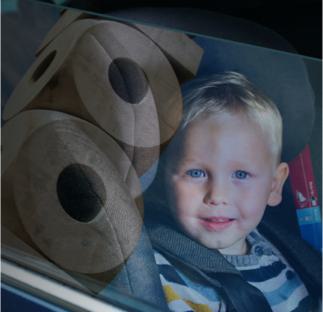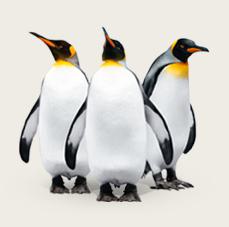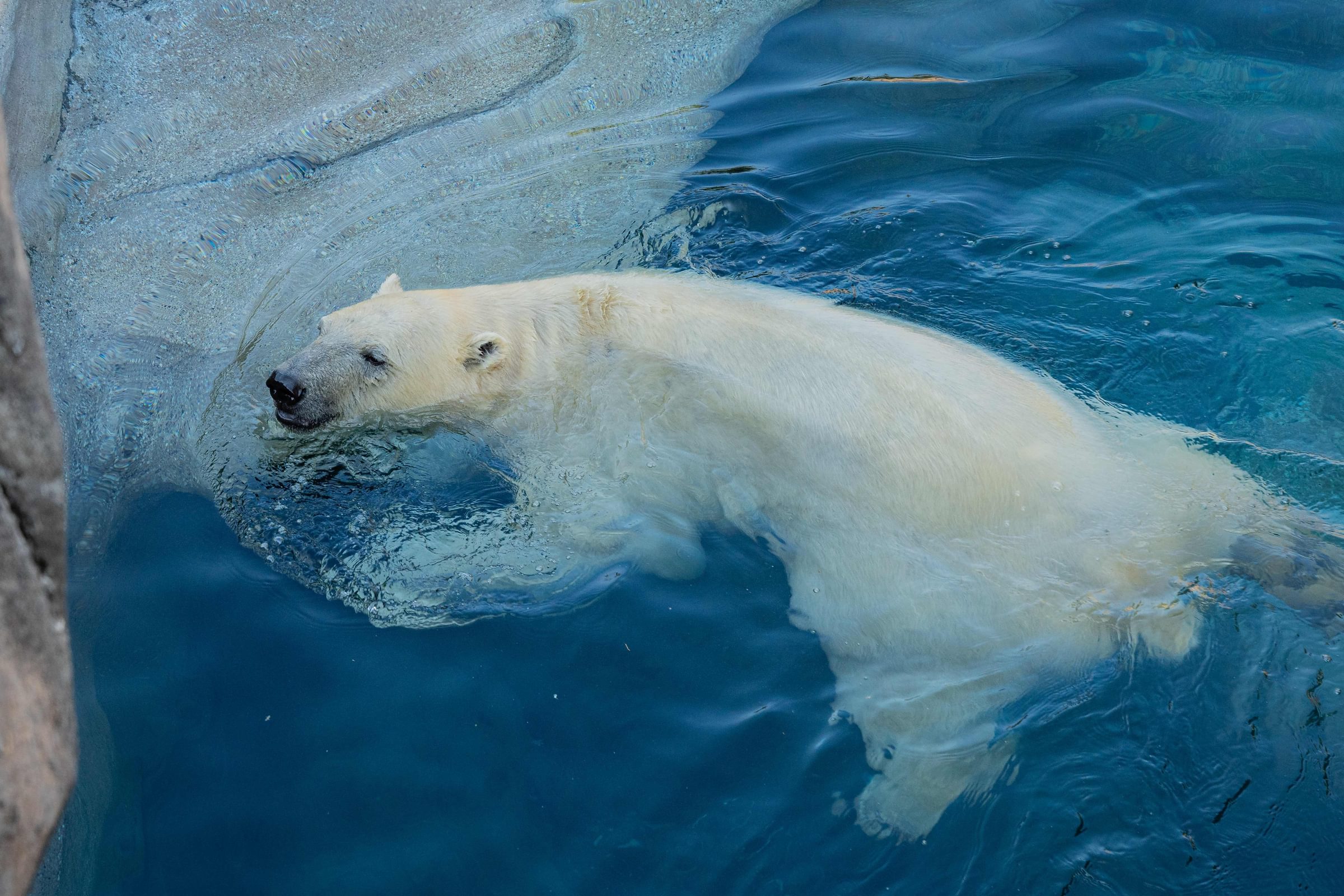
Climate Change
What it is and how you can help
Climate change refers to long-term shifts in temperatures and weather patterns. When we burn fossil fuels (gas, oil, coal, natural gas) for transportation and energy, we add more and more carbon dioxide (CO2) into the atmosphere. This buildup acts like a blanket that traps heat around the world, and it's getting thicker, which is disrupting our climate. Scientific consensus holds that climate change is interrupting natural cycles, causing habitat loss and prompting more extreme weather patterns. All of this affects animals and people.
As a conservation organization, the Saint Louis Zoo has a responsibility to constructively engage in climate change solutions.
- Plants grow by using the regular CO2 that animals exhale as part of normal life processes. Our planet needs the perfect mix of atmospheric gases to trap heat and the right amount of sea ice to reflect heat energy back into space. This perfect mix sustains the biodiversity of life on our planet.
- When we burn fossil fuels (gas, oil, coal, natural gas) for transportation and energy, we add rampant CO2 to the atmosphere. Rampant CO2 builds up in the atmosphere and ocean, where it causes problems for the Earth’s climate and ecosystems. We need to reduce rampant CO2.
- Plant and animal ranges are shifting. Some animals may not be able to shift, thereby risking extinction.
- Plants and trees are blooming earlier, resulting in pollinators being unavailable at the appropriate pollination time. According to the U.S. Department of Agriculture, 35% of the world's food crops depend on animal pollinators to reproduce (about one of three bites of food most people eat).
- Weather patterns are shifting, causing more instances of droughts, extreme temperatures, wildfires and extreme rainfall. This threatens people and animals’ health and homes.
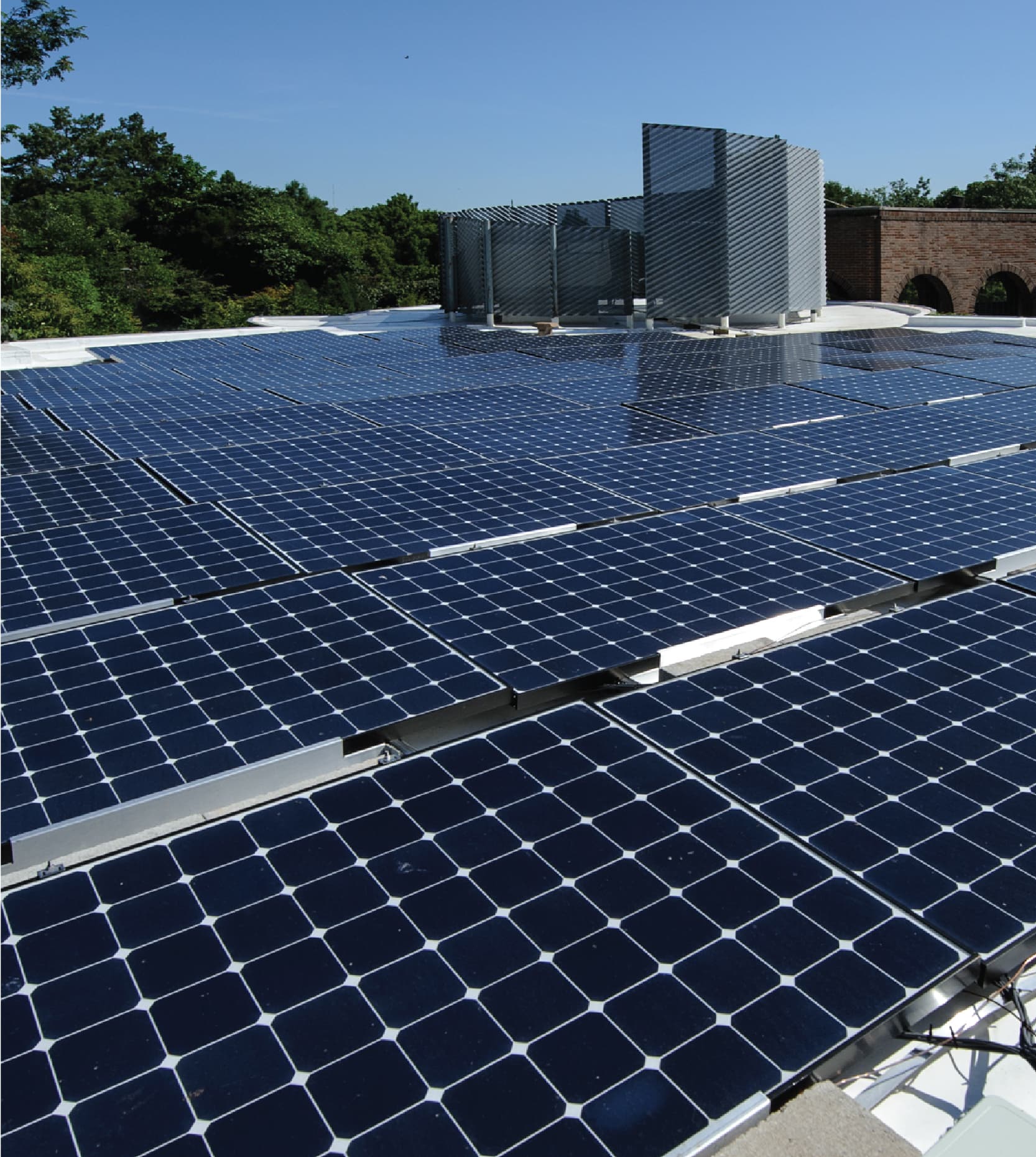
The Zoo’s role in climate change solutions: Sustainable operations
We have a commitment to making our campus and operations sustainable as part of our conservation mission. We have made great efforts to reduce our environmental footprint, reduce heat-trapping gas emissions and protect natural resources.
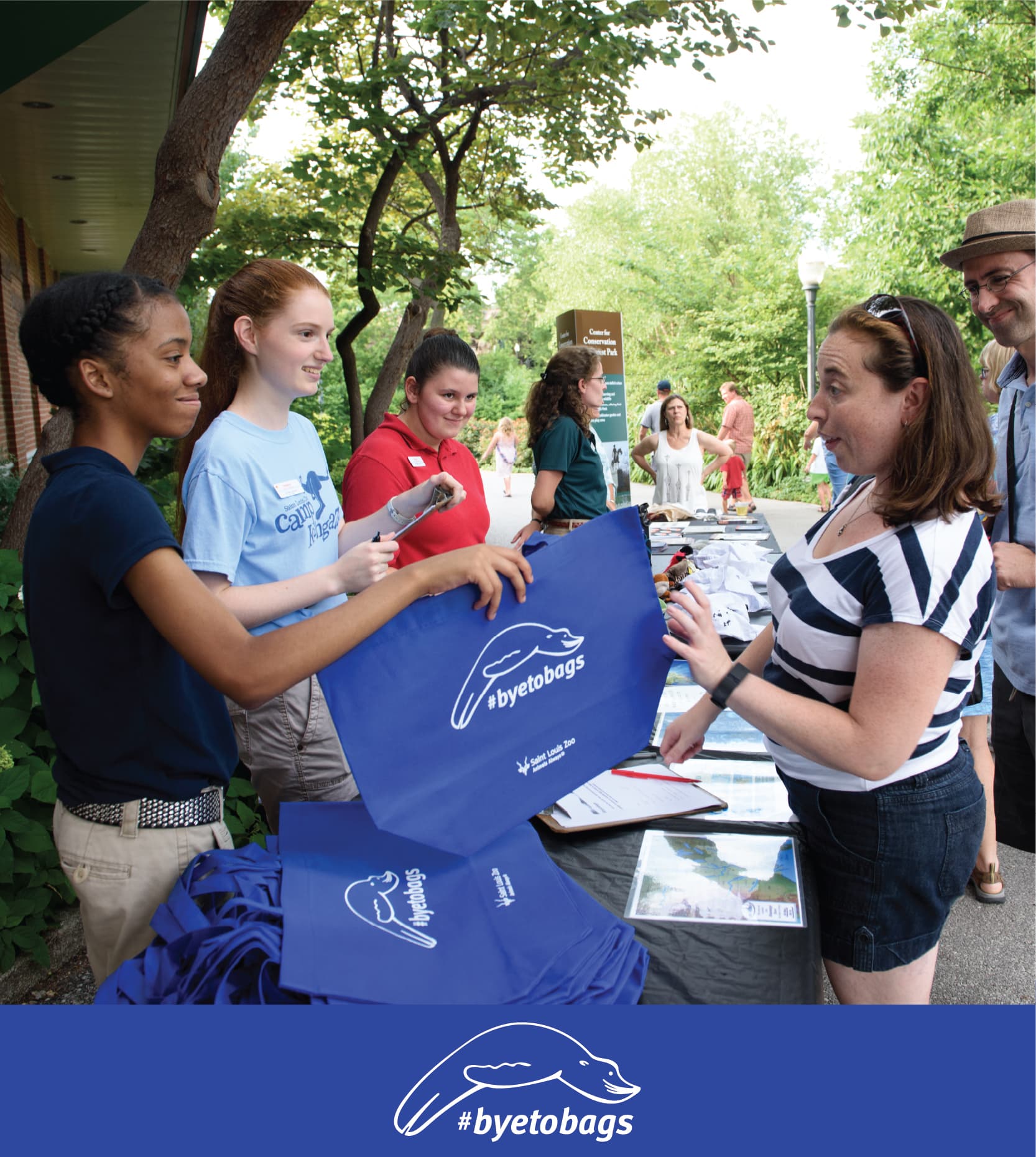
The Zoo’s role in climate change solutions: Education and partnerships
We connect with our guests and have meaningful conversations about how, together, we can make a difference for animals and the planet.
#byetobags
The average family can keep 1,500 plastic bags from being used each year by switching to reusable bags. Take the Zoo’s pledge now and learn more about how you can keep our planet healthier.
Engaging with Zoo guests about climate change
Our Zoo team includes trained docents and interpreters who share information about our animals and how guests can help them. You can find them most days at the Zoo, as well as at many Zoo events (like Endangered Species Day).
Collaborations
Through the Saint Louis Zoo WildCare Institute Center for Polar Bear Conservation, we have partnerships with five Alaska Native villages: Gambell, Savoonga, Little Diomede, Wales and Point Lay. We're committed to sharing the communities’ perspectives about polar bears and how their environment is affected by climate change; you can learn some of their stories at McDonnell Polar Bear Point.
The Zoo also supports scientific studies led by Polar Bears International, the only nonprofit dedicated solely to polar bears and Arctic sea ice. Through Polar Bears International's Arctic Ambassador Center network, the Center for Polar Bear Conservation connects with zoos, aquariums and wildlife parks across North America and Europe to amplify outreach on climate change and solutions.
In addition, the Zoo is a founding member of the Midwest Climate Collaborative and a longtime member of the National Network for Ocean and Climate Change Interpretation.
How can we work together to create a more sustainable future?
- Work with local restaurants to make your community a Green Dining District, which is part of St. Louis’ Green Dining Alliance (GDA). Our Zoo is a proud member of the GDA!
- Plant trees, maintain greenspaces and provide pollinator gardens.
- Engage with your place of worship about ways your congregation can be more climate friendly.
- Ask your utility company to provide renewable energy.
- Work to access compost pickup in your neighborhood; check with your city council or seek out local companies that will compost for you if your city can’t compost.
- Use your voice! Join a national cause or lobby local civic leaders and businesses to support efforts to cut emissions and reduce carbon pollution.
- Have your company or enterprise join the St. Louis Green Business Challenge.
- Perform an energy audit and invest in renewable energy if possible.
- Pack a no-trash lunch, and reuse or compost waste. (Recycling, while important, will not solve the climate problem.)
- Walk, bike, take the bus or carpool, when possible.
- Know your idling laws. Check your local ordinances and raise awareness of idling laws, especially in the carpool line.
- Conduct a school-wide letter writing campaign to policy makers, letting them know you support climate policies and legislation.
- Have a gently used clothing swap or sale.
- Make your voice heard. Track efforts by civic leaders and policies that work to reduce carbon emissions locally, statewide and nationwide.
- Reflect on your transportation. Look at ways you can reduce your use of carbon emission transportation and support transit expansion.
- Perform an energy audit on ways to reduce your energy consumption. Switch to a zero-carbon or renewable energy provider if possible.
- Buy local and in-season food when available. It’s also good for your health!
- Don’t waste food, compost it! According to the U.S. Food and Drug Administration, food waste is estimated at between 30 and 40% of the food supply in the U.S. Check with your city to see if community-wide composting is available.
- Avoid “fast fashion” and buy clothing that will last longer and repair items instead of discarding them. You can also consider renting certain clothing items (like items for special events) instead of buying.
